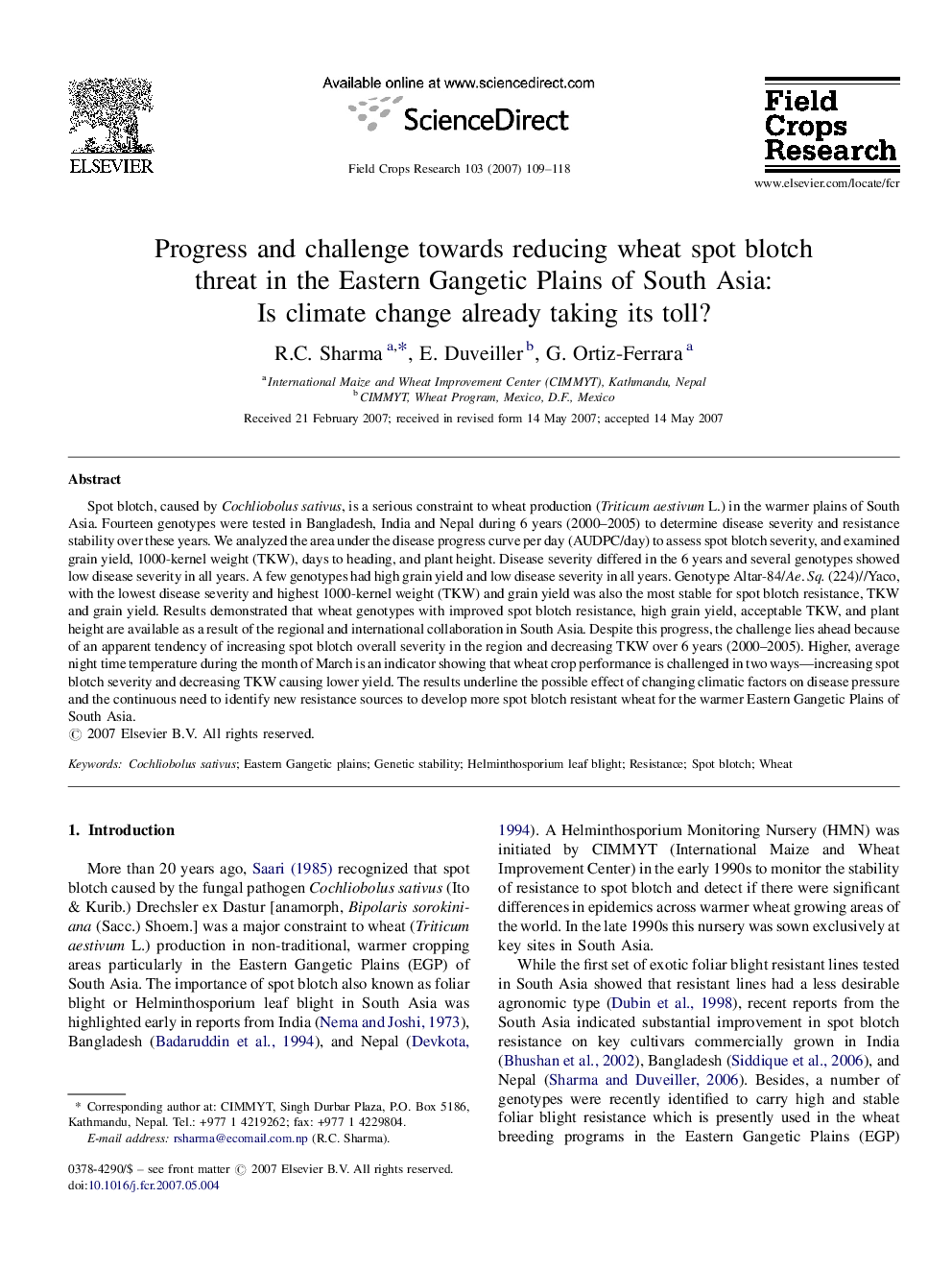| کد مقاله | کد نشریه | سال انتشار | مقاله انگلیسی | نسخه تمام متن |
|---|---|---|---|---|
| 4511575 | 1321920 | 2007 | 10 صفحه PDF | دانلود رایگان |

Spot blotch, caused by Cochliobolus sativus, is a serious constraint to wheat production (Triticum aestivum L.) in the warmer plains of South Asia. Fourteen genotypes were tested in Bangladesh, India and Nepal during 6 years (2000–2005) to determine disease severity and resistance stability over these years. We analyzed the area under the disease progress curve per day (AUDPC/day) to assess spot blotch severity, and examined grain yield, 1000-kernel weight (TKW), days to heading, and plant height. Disease severity differed in the 6 years and several genotypes showed low disease severity in all years. A few genotypes had high grain yield and low disease severity in all years. Genotype Altar-84/Ae. Sq. (224)//Yaco, with the lowest disease severity and highest 1000-kernel weight (TKW) and grain yield was also the most stable for spot blotch resistance, TKW and grain yield. Results demonstrated that wheat genotypes with improved spot blotch resistance, high grain yield, acceptable TKW, and plant height are available as a result of the regional and international collaboration in South Asia. Despite this progress, the challenge lies ahead because of an apparent tendency of increasing spot blotch overall severity in the region and decreasing TKW over 6 years (2000–2005). Higher, average night time temperature during the month of March is an indicator showing that wheat crop performance is challenged in two ways—increasing spot blotch severity and decreasing TKW causing lower yield. The results underline the possible effect of changing climatic factors on disease pressure and the continuous need to identify new resistance sources to develop more spot blotch resistant wheat for the warmer Eastern Gangetic Plains of South Asia.
Journal: Field Crops Research - Volume 103, Issue 2, 30 August 2007, Pages 109–118